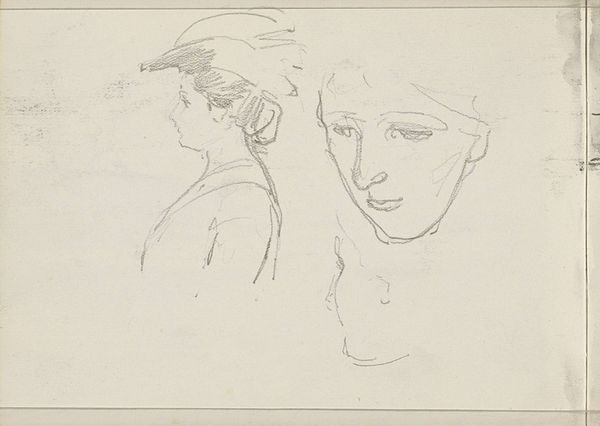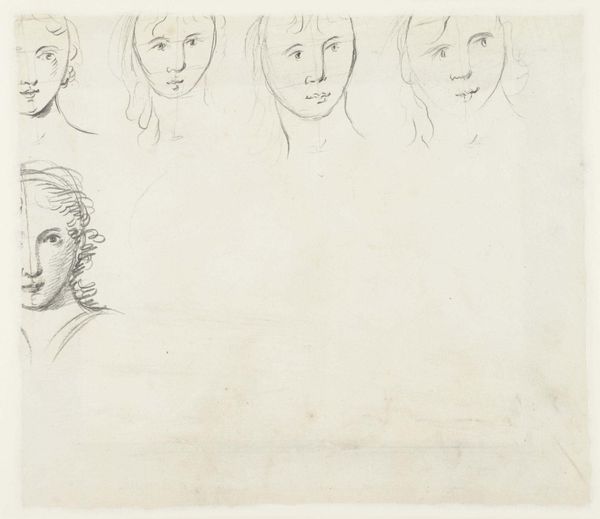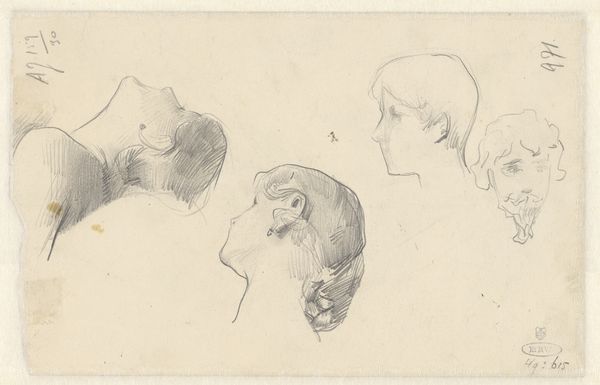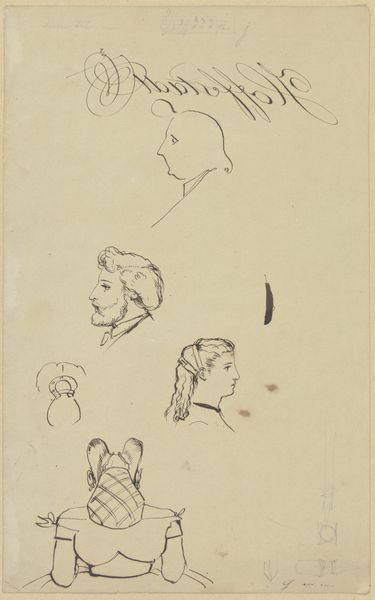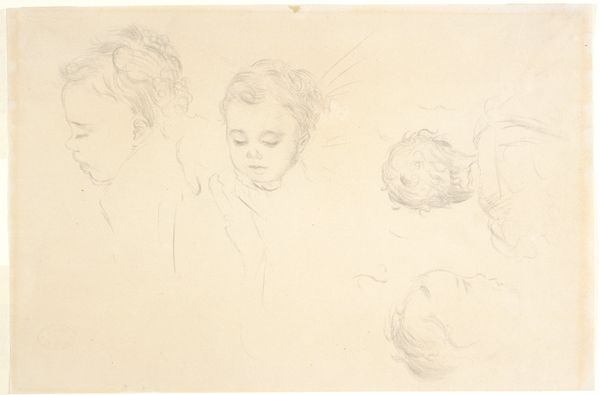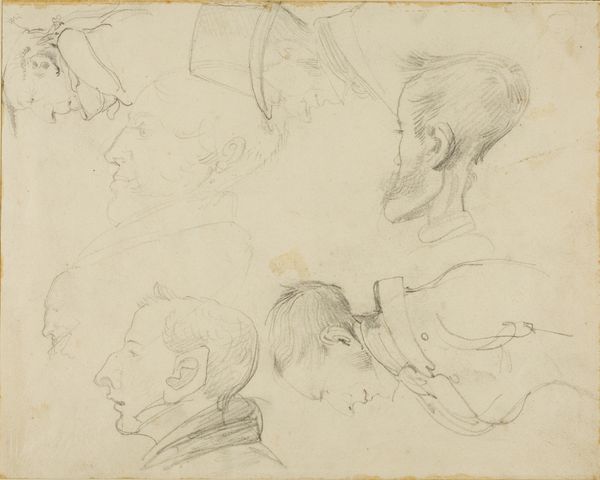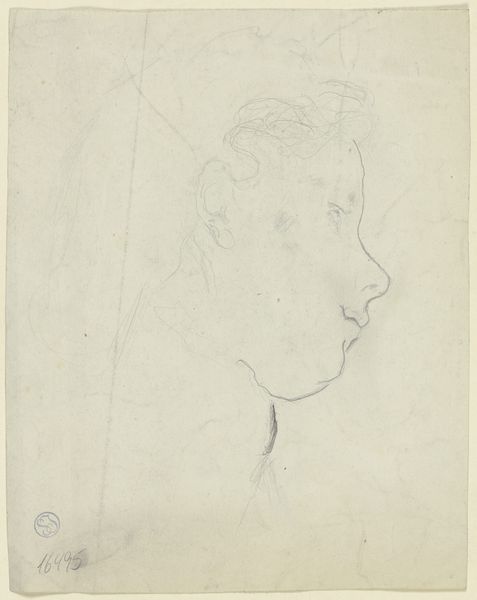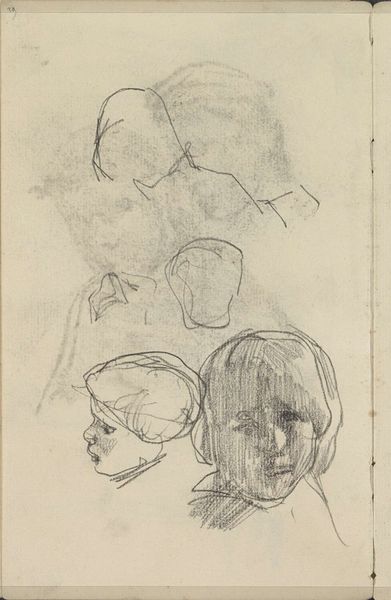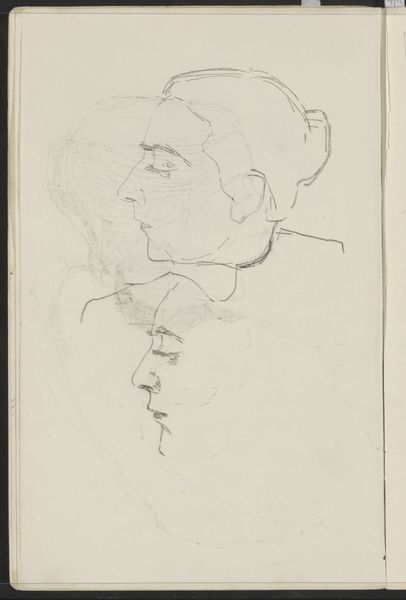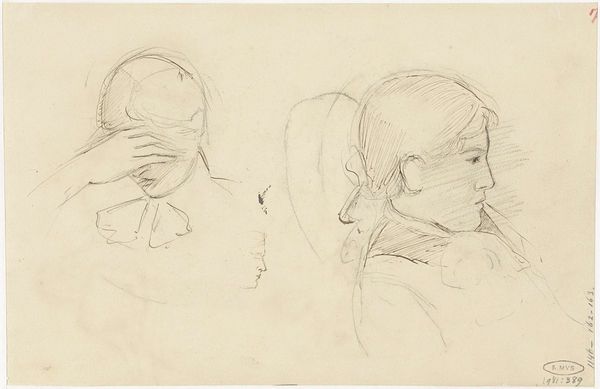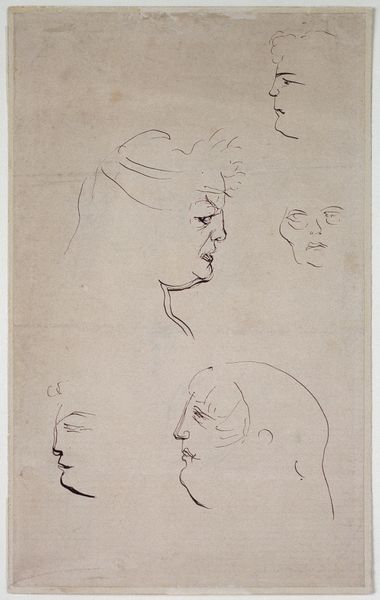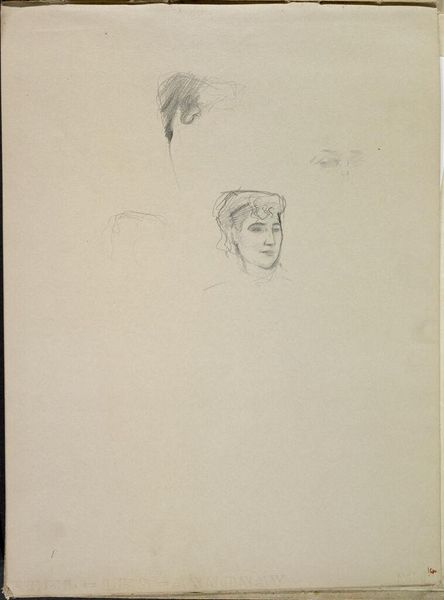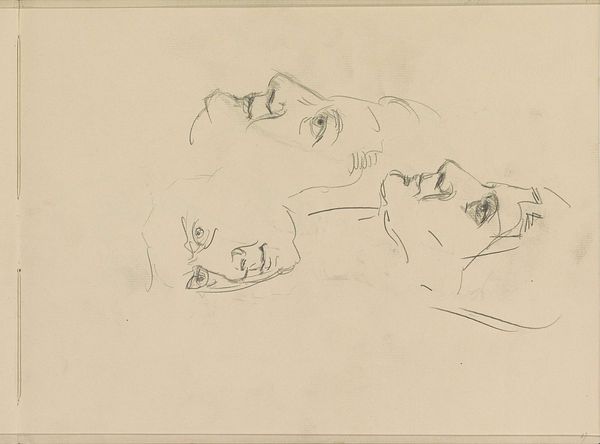
drawing, pencil
#
portrait
#
drawing
#
figuration
#
pencil
#
academic-art
Dimensions: overall: 18.6 x 27.6 cm (7 5/16 x 10 7/8 in.)
Copyright: National Gallery of Art: CC0 1.0
Curator: This delicate pencil drawing is attributed to John Flaxman. Titled "Head of Mary Magdalen and Two Saints(?)," it presents us with a study of three figures. There's a ghostly quality to the forms aren't there? Editor: Indeed, there's a striking sense of ethereal quietude. The light pencil strokes against the paper gives the impression of figures caught between presence and absence, especially those lines dissecting their faces. Curator: The presence of those lines makes me want to explore the materiality of its making: the surface of this particular sheet of paper, perhaps from his personal sketchbook; the varying hardnesses of pencils available, what brand? I imagine Flaxman choosing it carefully, even aware of the legacy he hopes to create. Editor: It’s compelling how these preliminary sketches—those lines bisecting the figures, almost like a veil—reveal something about the historical weight Mary Magdalen carries as a symbol, both sacred and, at times, shrouded in misinterpretations. She, even the others as assumed Saints, have endured varied symbolic re-imaginings. Curator: I like how you point out her multifaceted representation. What kind of paper stock did Flaxman use? The support seems relatively smooth, and that impacts how the pencil glides. Were his choices based on accessibility or informed intention to represent her character? And who might the other figures represent, and how does that context change if one were to learn more about Flaxman’s studio practices, models and daily routines? Editor: We can't definitively claim who the other figures are without more context, and whether they're male or female figures adds different readings given Magdalene's associations with varied followers or peers. The subtle shifts in each portrait speak volumes about archetypes we've constructed around sainthood, and they almost mirror Magdalene’s historical re-envisioning. The varying perspectives carry psychological implications too, as if reflecting different facets of perception of religious icons. Curator: So insightful, reflecting on its spiritual nuances. When considering pencil strokes and layering on a granular level, the repetition involved in the physical act reveals this study as its own process. Editor: Absolutely, from these ethereal wisps on paper, you can sense those deep symbolic wells. Curator: It offers a space where materiality intersects beautifully with our own interpretations and beliefs. Editor: I agree—Flaxman prompts a connection between historical identity and modern re-imagining, prompting consideration about the evolving narratives we weave around such significant religious symbols.
Comments
No comments
Be the first to comment and join the conversation on the ultimate creative platform.
